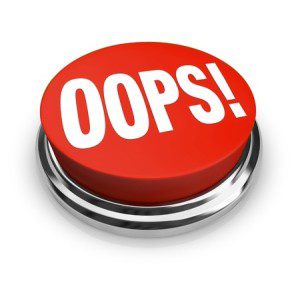 Studies show that the supply chain accounts for over half of the total cost of production. Successful management of the supply chain therefore requires the ability of a company to recover quickly from disruptions. The supply chain is even more complex than it was two decades ago so it is critical that you remain vigilant, steer clear of common mistakes and appreciate the benefits of proactive management.
Studies show that the supply chain accounts for over half of the total cost of production. Successful management of the supply chain therefore requires the ability of a company to recover quickly from disruptions. The supply chain is even more complex than it was two decades ago so it is critical that you remain vigilant, steer clear of common mistakes and appreciate the benefits of proactive management.
That said, here are 5 common mistakes in modern-day supply chain management;
1. Prioritizing functions by spend
Quantifying by spend is probably the most common mistake in supply chain management. Simply put, you look at your suppliers and prioritize functions based on who supplies most of your goods and services. So, even if you have 20 suppliers, you’ll want to prioritize say five suppliers whom you’ve always spent 80 percent of your budget on. This strategy worked well until fifteen years ago when outsourcing was proliferated. Today, supply chains come in layers where you source from several suppliers.
You can no longer rely on a single source for your parts otherwise these parts would become a single point of failure in the supply chain.
2. Accountability framework mistakes
If your CEO is to hold the Chief Procurement Officer (CPO) responsible for disruptions realized in the supply chain, you must also give the CPO people to hold responsible for these disruptions. And please, make this clear by including in the organizations constitution or similar documents. It is apparent that very few organizations bother to assign supply chain disruption duties to anyone at the operational level. This often causes confusion when there is a disruption and no specific employee can be held responsible.
Managers are advised to assign supply chain disruption responsibilities to specific persons and ensure that these people are properly trained and provided with proper tools and infrastructure to effectively discharge their duties.
3. Lack of or limited visibility across dependencies in the supply chain
Many managers still struggle to uncover where their supplies are coming from, according to recent studies. What this means then is that these managers don’t yet know their true supply chains. For instance, a part that the manager thinks is dual sourced might in fact be single sourced somewhere on the higher levels of the supply chain. Even worse is the fact that most managers admit to lack of visibility in their supply chains but are very reluctant to find ways of reversing this situation.
4. Short-sighted management
A fully optimized supply chain will experience several risks including but not limited to delivery delays, supplier issues, quality problems, increase in demand, and supply shortages. While these are expected challenges which all managers should be aware of and prepared to tackle, it is nearly impossible to address all of them at a go. You’ll be required to solve the challenges dynamically – one after another. This can deny the management the chance to proactively assess problems in the supply chain as a whole. And when this happens, managers often make a big mistake – de-prioritizing risk management.
5. Proactive rather than reactive management
You often find managers effecting a change just after a crisis that didn’t make a large impact or because they managed to recover quickly. While it’s actually encouraging to get up after a fall, this is never the best management approach. Supply chain organizations are encouraged to develop the right infrastructure for proactive management where you create clear paths of communication in case of a crisis and use rewards rather than punishments to encourage employees to play their roles.
Looking for a Solution?
3PL Links can take care of your supply chain management & logistics needs. We offer solutions for any industry vertical. Give us a call today!


